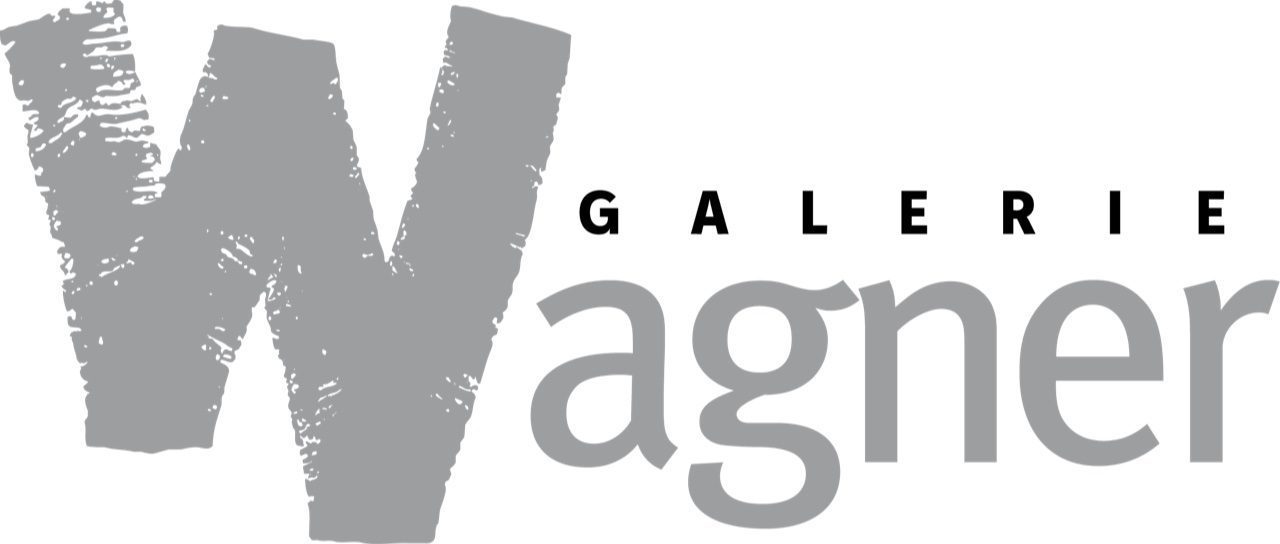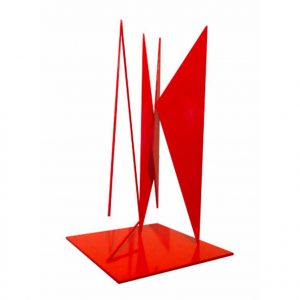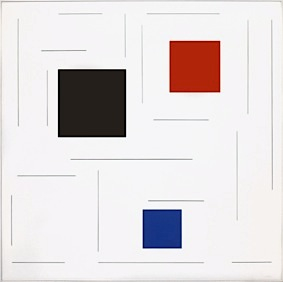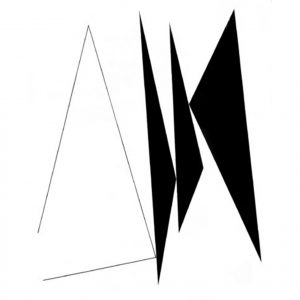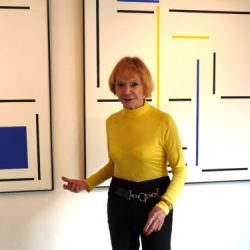
Geneviève Claisse
- Born in Quiévy (Nord) – died in 2018
- Self-taught, disciple of Herbin
- 1958 : First solo exhibition at the Caille gallery in Cambrai and Hybler gallery in Paris
- 1961 : First exhibition at the Denise René gallery where she will then exhibit regularly
The artist, great figure of geometric abstract art, is exhibited in many museums and private collections.
Geneviève Claisse has no intention of becoming an architect, but explores the spatial arrangement of colours, plans and lines. Her view of the world once crossed with that of one of today’s famous architects. In this regard, she tells a strange story of an exceptional moment of creation. Thus, when architecture leads to painting, there is a meeting of the constructive and the sensitive.
One night that winter, she was awakened by an unusual dream about the architect Oscar Niemeyer, who built many of the buildings in Brasilia, and about whom she had seen a documentary the night before. In the middle of the night, the dream was embodied in a series of drawings made under the influence of the abstract. In a moment of great control of her pencil, she drew freehand, syncopated oblique rhythms intersecting at a square angle.
« I woke up, took my sketchbook and started drawing intuitively as I always do, but it was so clear that even the colours imposed themselves on me. » The oneiric fusion between drawing under the influence of a dream and in communion with an architect, generated drawings so balanced that they all gave birth to a painting, the drawing becoming an architecture sublimated by the artist’s sensitivity.
As if to avoid being referred to as being architectural works, the drawings are built on the oblique which leads the eye from one point to another following the line that Geneviève Claisse draws down from top to bottom and from left to right. The lines are open and generate movement. They follow the intangible forms of the square, the circle and the triangle, on which she had initially based her paintings and freed herself from the materiality of the subject to let only the intuition of creation act. She calls her paintings Omnipotent Operator, Generating Operator, Mono-kinetic Operator… to remind us that the artist decides on the connections with her conception of the real which, in this case, turns out to refer to the field of science in which it is rare that the plastic arts have connivances.
Geneviève Claisse draws anywhere she is, first in her studio and now more and more during unpredictable moments, in the street, in a hotel room, as others would write a diary.
« My writing is drawing. All the past, everything I’ve drawn is there when I pick up a pencil. » « When I look at my drawings, » she says, « if I don’t ‘see’ colour in it, I don’t make it a painting. But if colour is involved in the drawing, it becomes a work of art. The drawing evolves into a gouache and then a painting. »
Colours in the form of small squares that punctuate the linear rhythms. Sometimes the construction of the drawings is based on a black square, going off into infinity through a luminous yellow or a blue.The pattern then highlights these few colours of blue, red, yellow or green. The current range of blue, to choose just one colour, is a mixture of ultramarine blue tinted with cobalt blue in a range that differs in intensity. “In blue there are so many shades, » she says. Yellow is the colour of light, blue goes towards the darkness but also towards white.
“The shades are so numerous that I always manage to find the colour value I want because it is a very subtle colour. It is a colour that I have to master, the colours change according to the times: green then red. For the last two years, a blue spot has dominated my paintings. »
The colour comes last and yet the whole work is based on it. « If I don’t feel the colour, the drawing will never become a painting. Colour is the heart of the work. It gives life. It is my drive to create, to bring life and not ‘beauty’ which is a word that means nothing.
Geneviève Claisse owns this natural science of colour.
« I have always been comfortable with colours. They are a natural part of things.”
For years, her intense research of colours to their paroxysm has made them give back everything they possess. Today, white dominates the canvas, colour is registered on limited surfaces and yet radiates not in saturation but in intangibility. Another immense space leads the gaze beyond the surface of the painting or of the drawing, which becomes a fragment of her own world that she offers us to join.
Dominique SZYMUSIAK
Conservator of the Musée Matisse, Le Cateau-Cambrésis
Public Collections :
- Musée des Beaux-Arts, Aarau
- Musée de Cambrai, Cambrai
- Musée Matisse, Le Cateau-Cambrésis
- Musée des Beaux-Arts, La Chaux-de-Fonds
- Musée d’Art Contemporain, Chicago
- Musée d’Art et d’Histoire, Cholet
- Musée d’Art Contemporain, Dunkerque
- Louisiana’s collection in Danmark, donation Rikis Mac Crory Corp, Humlebaek
- Musée d’Art Marcian, Kurusawa
- Musée des Beaux-Arts, Lausanne
- Fondation IBM Corp, New York
- Musée Guggenheim, New York
- Fondation Mac Crory Corp, New York
- Fondation Camille, Paris
- Fondation France Liberté, Paris
- Fonds National d’Art Contemporain, Paris
- Fonds Régional d’Art Contemporain, Paris
- Fondation Sikkens, Rotterdam
- Tel Aviv museum, donation Rikis Mac Crory Corp, Tel Aviv
- LaM, Villeneuve d’Ascq
- Musée Ritter, Waldenbuch
- Fondation Hirschhorn, Washington
- Das Klein Museum, Weissenstadt
- Collection UNESCO
